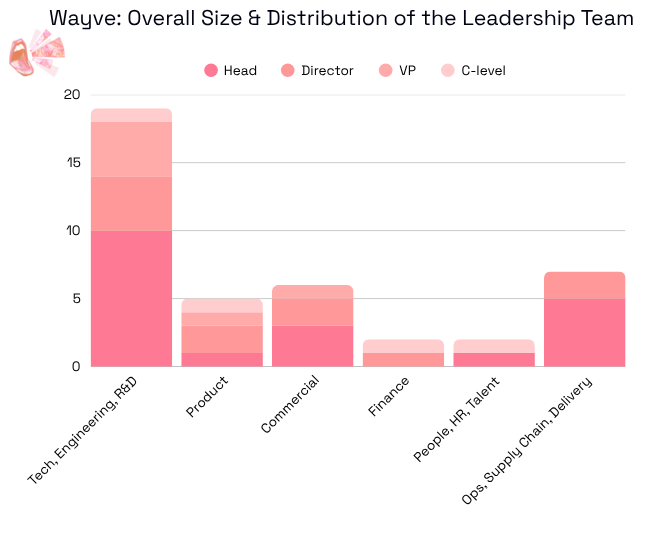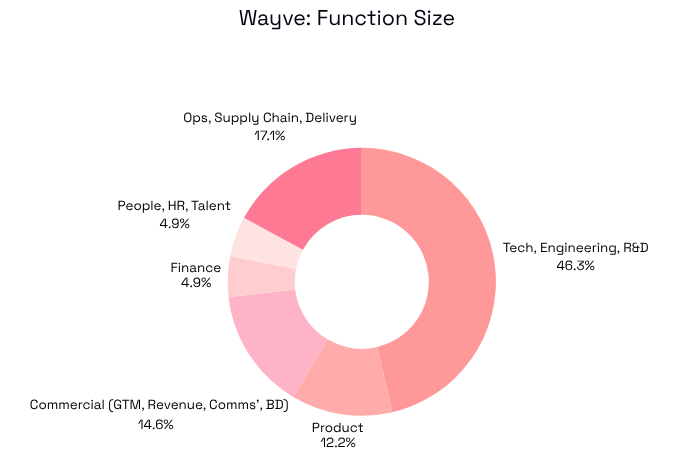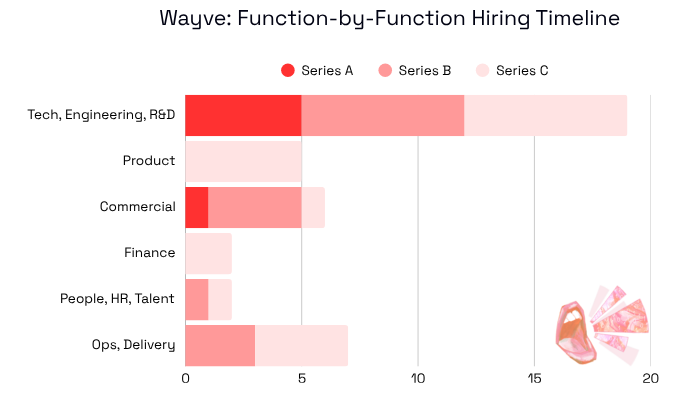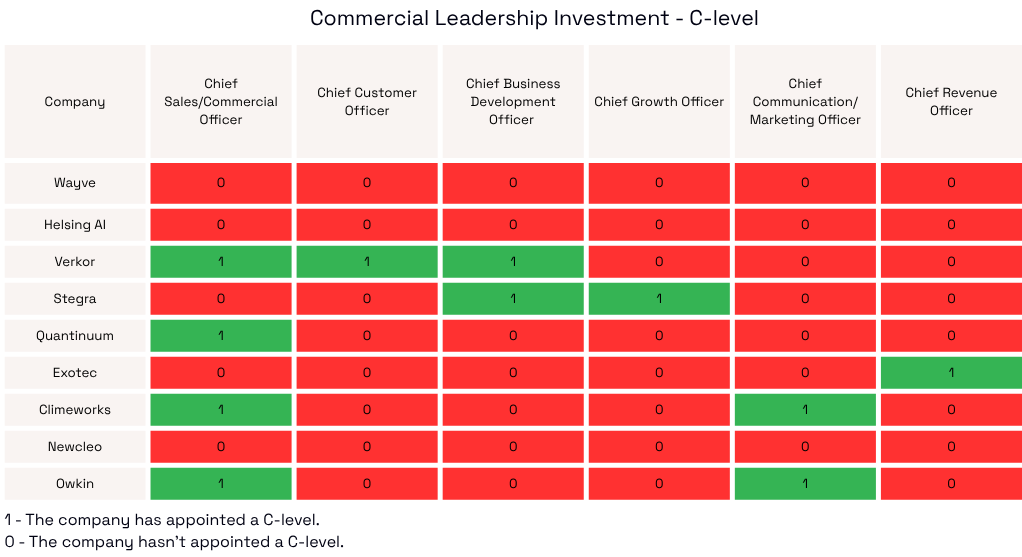Inside the Leadership of a Novel AI Unicorn: Wayve
We analyzed how Wayve builds its current leadership team across every business function
After unpacking the leadership of France’s Mistral AI, we’re crossing the Channel to London, zooming in on Wayve’s executive team.
In 2024, Wayve raised the UK’s largest AI round with $1.05 b Series C at a $3b valuation and recently secured a partnership with Nissan to integrate its AI-driven autonomous driving software into Nissan vehicles by 2027.
We decided to take a look at its leadership team to check how it's building the organization.
Note: This research is based on publicly available sources and our own expertise. If you notice any inaccuracies, feel free to reach out so we can make corrections.
Wayve's leadership structure
Alex Kendall originally served as CTO but stepped into the CEO role in 2020, following the departure of co-founder Amar Shah.
Jamie Shotton oversees the Science and R&D function. This represents his first C-suite position, following a decade at Microsoft, where he was Partner Director of Science and led the Mixed Reality & AI Labs. We believe he operates independently without a formal reporting line to a superior within the org chart. He’s either an advisor or works directly with the CEO or board, but not in a traditional management hierarchy.
Kaity Fischer oversees both Commercial and Fleet Operations functions. She was promoted internally and hasn't previously held a C-level role. She may report directly to Erez Dagan.
However, Emma Baillie brings a solid track record in People leadership, having held Chief People Officer or CHRO roles at four companies over ~8 years.
Despite his broader title, Erez Dagan is reportedly leading the product strategy for Wayve's Embodied AI initiatives. He also played a key role in bringing their first Embodied AI products into production vehicles. Based on this, we think he holds a hybrid role and oversees the product and tech/engineering functions. Prior to Wayve, he spent two decades at Mobileye, a public company developing vision technology for advanced driver assistance systems and autonomous driving, where he last served as Executive VP of Product and Strategy.
VPs Silvius Rus, Dan McCloskey, Vijay Badrinarayanan, and Pablo Castellanos Garcia report directly to CEO Alex Kendall, but Erez Dagan likely handles their coordination, resourcing, and roadmap execution.
Which functions are most represented at the leadership level, and when were they built?
Wayve's Leadership Size: 40 leaders from Head- to C-level
The company relies heavily on Head-level roles, with 50% of Wayve's leadership falling into this category. Of course, the lower you go into the organisation, the more of a certain role you will find.
Wayve’s "DeepTech first" approach: When you have a larger, tech-heavy leadership team with a median of ~19 years' experience and longer tenures, you're looking at a classic DeepTech strategy - long-cycle R&D first, commercialization later. It also speaks to the reality of building complex autonomous systems, where getting a product to maturity takes years of testing, refinement, and patience.
Thus, Wayve is taking a slower and more classic DeepTech trajectory, starting with a strong technical foundation and progressively adding commercial leadership as the product matures and is ready for the market.
The timing of leadership hires also says a lot. The tech, engineering, and R&D leadership was already being built by Series A, while other functions were gradually built out during the Series B and C stages as the company scaled.
Notably, the entire product team was brought in after Erez Dagan’s appointment. Three of them previously worked with him at Mobileye, suggesting he’s developing the function with its very own people.
Wayve's Leadership: DeepTech Scaling Done Traditionally
Wayve has already filled out most of the C-level, which reflects its more advanced position in the scaling curve. Indeed, the presence of a CFO and Chief People Officer shows a clear organizational scaling process. At this point, when you don't have someone for those roles, you risk creating operational pain.
Wayve’s focus on hardware and full autonomy systems makes operations a core function. Despite this, and despite Ops and Supply Chain being the second largest leadership group by headcount, there’s still no C-suite representative for it.
Similarly, Wayve hasn't placed a dedicated commercial leader at the C-suite level. While the company’s President partially covers commercial responsibilities, this role isn't exclusively focused on commercialization.
We benchmarked Wayve against other European Deeptech scaleups, each valued at over €1b, to assess Wayve’s commercial leadership investment relative to its peers.
Every company is different; every company’s context is different. Still, based on this, Wayve can be seen to be underinvesting in its commercial leadership relative to some of its Deeptech peers. Yet, this isn't unusual in the European Deeptech sector, where commercial strategies typically lag behind technology maturity. Finding proven commercial leaders who understand growth-stage scaling is difficult - particularly in novel AI fields, where products remain fluid and go-to-market strategies are still experimental.
Likely next steps
Early teams leaned heavily technical, but now, with the technology market-ready, it’s perhaps time to round out the executive team. A Chief Commercial Officer and Chief Operating Officer are likely next on the agenda.
So, if you operate in this space and have strong relevant experience, keep Wayve in mind. And if precision and safety are non-negotiable at every stage, Wayve’s approach – a patient technical build followed by strategic commercial acceleration – could be exactly what you need.
If this kind of mapping speaks to you, if you're curious about how we built it, or if you're hiring a leader in DeepTech, let's talk. 🙂 Elena Obukhova








